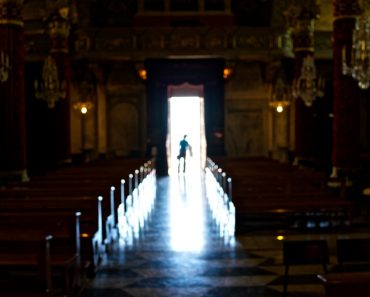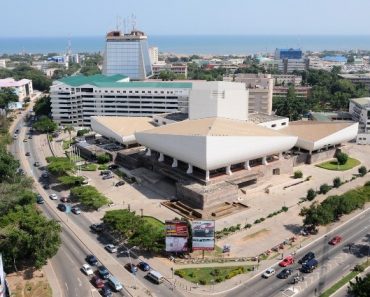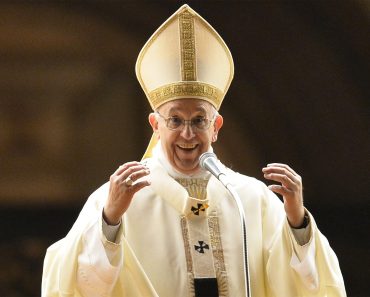The burial of dead people was to give them give the last honour they deserved. Any lack of proper burial is still regarded, as it was in ancient times, as a great indignity or a judgment from God. It was esteemed as the greatest calamity that could befall a person. It gave men still untold distress to think they would not receive suitable burial, according to the customs of their respective race, or family, or religion–a fact or sentiment that is often alluded or appealed to by way of illustration in the Scriptures. For a corpse to remain unburied and become food for beasts of prey was the climax of indignity or judgment (2 Sam 21:10,11; 1 Ki 13:22; 14:11; 16:4; 21:24; 2 Ki 9:37; Jer 7:33; 8:1; Ezek 29:5; Ps 79:3; Rev 11:9), and uncovered blood cried for vengeance (Ezek 24:6 f; 39:11-16), that the unburied dead would not only inflict trouble upon his family, but would also bring defilement and a curse upon the whole land. It was, therefore, an obligation resting upon all to bury even the dead found by the way (Tobit 1:18; 2:8). Even malefactors were to be allowed burial (Dt 21:22,23).
The patriarchs were basically nomads who did not have permanent locus. Their lives depended largely on where they could find serene atmosphere and vegetation for their livestock. Abraham affirmed this prior to his purchase of a burial site for his family – Gen 23:4; 5-20. With the purchase of the cave of Machpelah (east of Mamre) which is also believed to be the same as Hebron, the patriarchs and matriarchs would acquire a burial site – a place where Sarah, Abraham, Isaac, Jacob and Leah would all be buried. Although Jacob died in Egypt, his body was later carried back to the land of Canaan – Gen 50:12.
Moses body was not found although we are told he died on Mount Nebo Deut 34:7-8.Joshua buried in his inheritance at Timnath-serah (Josh 19:50; 24:30), Samuel in his house at Ramah (1 Sam 25:1), Joab in his house in the wilderness (1 Ki 2:34), Manasseh in the garden of his house (2 Ki 21:18), Josiah in the same tomb, it would seem, as his father and grandfather (2 Ki 23:30), and Asa, singled out for special mention (2 Ch 16:14).
In the New Testament, we are told that Lazarus was placed in a tomb where he spent four days- Jn. 11:17. However, what we do not know is the one who possessed that tomb, although it was believed that around that time communities and certain rich individuals acquired tombs. Unlike Lazarus tomb, then the one which “housed” Jesus Christ for three days was the property of Joseph of Arimathea – Matt 27:59-60. It is not surprising that Godman, Jesus did not have a personal tomb. Right from his decision to become man, he had to rely on borrowed rentals – the womb of Mary, the manger- Luke 2:7, the boat of Simon – Luke 5:5 and now the tomb of Joseph of Arimathea. He who had everything, the One to whom the world belonged cf. Ps 24:1-2; 50:12, had to rely on what His handiwork would provide Him once He had become man. – (Louis Cecilia Adu-Poku, Understanding the Hail Mary – 2012 p 42.)
The first Christian martyr Stephen was buried but we are not told whether it was in a cave. Since Christianity was taking shape around this time, the adherents tried to secure the bodies of their heroes – cf. Heb 13:7. After Stephen, James will also suffer martyrdom under Herod Acts 12:2. He was the first of the apostles to undergo such death. All the apostles suffered martyrdom but in various forms with the exception of John. In their deaths, their disciples or followers made sure that their bodies were given befitting burial. This was to prevent the pagans from desecrating the bodies after their martyrdom.
The persecutions of the Christians, which began under the emperor Nero around the year 64 AD, occurred at intervals until the year 313, when they were ended by the emperor Constantine, who promulgated the Edict of Milan. From that point onwards, the tombs of the martyrs became places of great veneration, visited by countless pilgrims and the Christian faithful of Rome.
The crypt, like most of the other catacombs, underwent serious pillaging and destruction, because of the barbarian invasions of Rome. Tribes like the Goths and Longobards opened tombs in search of precious objects.
Following the invasions, the bodies of many martyrs were moved into the churches of Rome for safekeeping. When the emperor Constantine ended the persecutions and recognized Christianity as a religion, basilicas and churches began to be built throughout the city of Rome. In the process of removing many of the martyrs from their tombs in the catacombs to be transferred into the basilicas and churches, many frescoes and mosaics were destroyed, and countless marble slabs were shattered.
These historical events signalled the definite abandonment of the catacombs. Although their memory did not vanish completely during the Middle Ages, many of the catacombs were forgotten. Whereas the churches and basilicas built above certain catacombs insured their memory, for example the Basilica of St. Lawrence or that of St. Peter, others had no monument above ground to mark them.
With the social upheaval of the barbarian invasions, it was a task in itself to safeguard the churches, basilicas, and other monuments throughout Rome. The catacombs were located outside the city, because Roman law prohibited burial within the old city walls. Thus, many of the entrances and skylight shafts of these catacombs, were filled with dirt by farmers who tilled the fields outside the city walls, not knowing what lay below ground but concerned about safely working the land and not falling in with his oxen.
The Crypt of the Popes is located in the Catacombs of Saint Callixtus along the Appian way. Discovered in 1854 by the noted archaeologist, Gian Battista de Rossi, the Crypt of the Popes was thus named because nine of Rome’s early bishops were buried there.
De Rossi’s scientific research of archaeological and historical sources led him to the conclusion that there was a very important chamber to be found somewhere within the catacombs of St. Callixtus. Confident of this, he continued his excavations, overcoming many difficulties.
The Crypt of the Popes
The pioneer archaeologist unearthed the crypt, and the fragments which had remained buried within for centuries, proved to be an astounding discovery. The marble tomb slabs belonging to six popes were discovered. The epitaphs of three popes however were missing. All were popes of the third century!
In chronological order, their names were:
St. Pontianus (230-235) – banished by the Emperor Alexander Severus to forced labour in the Sardinian mines, where he died from ill treatment. Pope Fabian had his remains brought back to Rome and laid within the crypt.
St. Antherus (235-236) – his 43-day pontificate was spent in prison where he died.
St. Fabian (236-250) – the large part of his pontificate was during a period of little persecution. He was decapitated when the persecutions of the Emperor Decius began.
St. Lucius (253-254) – his short pontificate was during a period of violent persecutions.
St. Stephen (254-257) [epigraph not found] – he was pope during the violent persecution of the Emperors Valerian and Gallienus.
St. Sixtus II (257-258) – beheaded along with his deacons by soldiers of the Emperor Valerian.
St. Dionysius (259-268) [epigraph not found]
St. Felix (269-274) [epigraph not found] was martyred under the Emperor Aurelian.
St. Eutichian (275-283)
The Popes have always served as bishop of Rome, following in the steps of Rome’s first bishop, St. Peter. In the marble tomb slab of Pope Fabian, we see his name written in Greek: FABIANOS followed by the first three letters of the Greek word for bishop, EPI, (episcopos). Lastly, we note the letters MR, the abbreviation used to signify martyr.
In the fourth century, Pope Damasus dedicated the crypt as a chapel commemorating the holy martyrs that were buried there. In the large central inscription, dating back to the 4th century, Pope Damasus, poetically offers us a description:
know that here lies united an army of saints
these venerable tombs contain their bodies …
here the followers of Peter, here lie the friends of Sixtus,
here young men and boys, the elderly with their offspring
here too, I, Damasus, confess, would like to be buried,
were it not for the fear of profaning the ashes of these holy martyrs?
The Crypt was venerated because it contained the early martyrs of the faith. Pope Fabian for example, suffered martyrdom in the year 250 during the persecutions of the emperor Decius. The marble slab above that of Pope Damasus sealed the tomb of Pope Sixtus II, who was decapitated, along with his four deacons, by the soldiers of the emperor Valerian.
In the sixteenth and seventeenth century, catacombs began to be rediscovered, most of the time by sheer accident. With the birth of the science of archaeology in the eighteenth century, the catacombs began to be discovered with scientific criteria.
In our present day, the catacombs open to the public offer its visitors a place where they can discover faith. Whether it be the pilgrim, who specifically visits the holy places, as did so many pilgrims throughout the Middle Ages and beyond, or the modern tourist, regardless of his faith, the history of the catacombs is a testimony to the early Christians, many of whom gave their life for their belief in Jesus.
In the Code of Canon Law, Can 1176-1185 bothers on Church Funerals.
Can 1177 states that …the funeral of any deceased member of Christ’s faithful should normally be celebrated in the church of that person’s proper parish.
Can 1178 – also affirms that the funeral of a diocesan bishop is to be celebrated in his cathedral church, unless he himself has chosen another church.
Regarding Cemeteries the canon explains:
1180 $ 2 continues that all may choose their cemetery of burial unless prohibited by law.
1242 – bodies are not to be buried in the church unless it is a question of the Roman Pontiff or of Cardinals or in their proper churches, of the diocesan bishops even retired.
1243 – adds that norms are to be enacted by particular law for the management of cemeteries, especially in what concerns the protection and fostering of their sacred character,
1239 $ 2 – no corpse is to be buried beneath an altar. Otherwise, it is not lawful to celebrate Mass at the altar.
Rites of preparation
The washing of the corpse (it was customary to wash the body (compare Acts 9:37), anoint it with aromatic ointments (compare Jn. 12:7; 19:39; Mk 16:1; Luke 24:1), minute directions are also given as to the clothing of the dead in the case of all clergy. They are to be attired in their ordinary ecclesiastical costume and over this they were to wear the vestments distinctive of their order. Thus, the priest or bishop must be clad in amice, Alb, girdle, maniple, stole and chasuble. His biretta (mitre) should be placed upon his head
The burning of more than one candle beside the body is not directly enjoined for all, but it is mentioned in the “Caeremoniale” in the case of a bishop and is of general observance.
QUICK ONE:
Joshua was buried in his home – Josh 19:50; 24:30
Samuel was buried in his home – I Sam 25:1
Josiah was buried in his home – II Kings 23:30.Since the cathedrals are ‘homes’ of the bishops (where their seats or stools are) they can be interred there.
Thanks for reading…
Louis Cecilia Adu-POKU
SOURCES
Code of Canon Law
MJ Maresoa – the Crypt of the Popes
International Standard Bible Encyclopaedia





